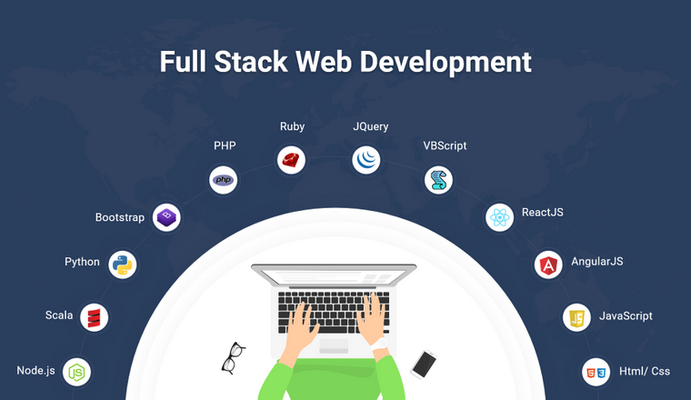
In today's dynamic digital landscape, the demand for Full Stack Developers is higher than ever before. These versatile professionals possess a comprehensive skill set that enables them to handle both frontend and backend development tasks with proficiency. But what exactly does it mean to be a Full Stack Developer?
A Full Stack Developer is a master of all trades in the realm of web development. They are proficient in working with both the frontend and backend technologies, making them invaluable assets for any project. From crafting engaging user interfaces to designing robust server-side architectures, Full Stack Developers possess the expertise to handle every aspect of the development process.
Full Stack Developers excel in frontend technologies such as HTML, CSS, and JavaScript. They have a keen eye for design and usability, ensuring that the user interface of a website is both visually appealing and intuitive to navigate. By leveraging frameworks like React, Angular, or Vue.js, they create dynamic and interactive web experiences that captivate users.
On the backend, Full Stack Developers are well-versed in server-side programming languages like Node.js, Python, or Java. They build robust APIs, manage databases, and implement security measures to safeguard sensitive data. Whether it's developing custom solutions or integrating third-party services, Full Stack Developers have the expertise to architect scalable and efficient backend systems.
Data is at the heart of every application, and Full Stack Developers are adept at working with databases. From relational databases like MySQL and PostgreSQL to NoSQL solutions like MongoDB, they have the knowledge to design and optimize database schemas for maximum performance and reliability.
In addition to development skills, Full Stack Developers are proficient in DevOps practices and deployment strategies. They leverage tools like Docker, Kubernetes, and CI/CD pipelines to automate the deployment process and ensure seamless delivery of applications across different environments. With their expertise in cloud platforms like AWS, Azure, or Google Cloud, they can scale applications to meet growing demands effectively.
By having a single Full Stack Developer handle both frontend and backend tasks, businesses can streamline their development process and reduce overhead costs. This versatility enables Full Stack Developers to take ownership of entire projects, from conception to deployment, ensuring consistent quality and faster time-to-market.
In a team setting, Full Stack Developers serve as bridges between frontend and backend teams, facilitating communication and collaboration. Their holistic understanding of the development stack allows them to effectively communicate requirements and troubleshoot issues, leading to smoother workflows and better outcomes.
The tech landscape is constantly evolving, with new frameworks, tools, and paradigms emerging regularly. Full Stack Developers possess the adaptability to quickly learn and master new technologies, staying ahead of the curve and future-proofing projects against obsolescence.
In an increasingly digital world, the role of Full Stack Developers is more crucial than ever. Their unique blend of frontend and backend expertise, coupled with their versatility and adaptability, makes them indispensable assets for any development team. By harnessing the power of Full Stack Development, businesses can build innovative, scalable, and robust web applications that stand the test of time.
Full Stack Development refers to the practice of building web applications that involve both frontend and backend development. A Full Stack Developer is proficient in working with frontend technologies like HTML, CSS, and JavaScript, as well as backend technologies such as Node.js, Python, or Java.
To excel in Full Stack Development, one must possess a diverse skill set. This includes proficiency in frontend technologies like HTML, CSS, and JavaScript, as well as backend languages like Node.js, Python, or Java. Additionally, knowledge of databases, version control systems, and deployment tools is essential for success in this role.
Hiring a Full Stack Developer offers several benefits for businesses. These professionals have the versatility to handle both frontend and backend tasks, streamlining the development process and reducing overhead costs. They also facilitate seamless collaboration between frontend and backend teams, leading to smoother workflows and better outcomes.
By having a single Full Stack Developer oversee both frontend and backend development, projects can proceed more efficiently. This eliminates the need for coordination between multiple developers and ensures consistent quality throughout the development lifecycle. Additionally, Full Stack Developers can quickly identify and address issues across the entire stack, leading to faster problem resolution and improved project timelines.
While Full Stack Development is well-suited for many projects, it may not be the best fit for highly specialized or complex applications that require deep expertise in specific technologies. In such cases, it may be beneficial to enlist the services of specialists in frontend, backend, or other specialized areas. However, for most web applications and projects with moderate complexity, Full Stack Development offers a cost-effective and efficient solution.
|
|